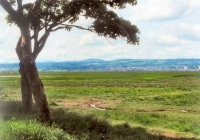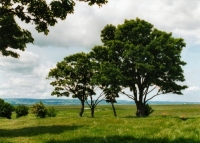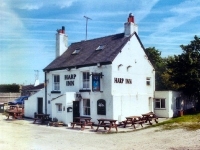| Willaston to Parkgate |
|
|||||||
| Willaston to Parkgate |
|
|||||||
This fine walk from the pleasant village of Willaston, with its restored period railway station, to the historic sea port of Parkgate and back is about 8½ miles (13½ km) in length. The route includes a section of disused railway line, now the Wirral Way, and an atmospheric stretch along the edge of the Dee Marshes. Willaston, Little Neston and Parkgate are of significant historical interest. There are several pubs along the way to stop for refreshments, of particular note being the Harp at Little Neston. Although most of the walk is on very good paths or hard surfaces, the section along the marshes is intermittently very muddy and a bit rough, so walking boots are definitely a good idea. The relevant Ordnance Survey 1:25000 Explorer map is No. 266. For further information on the locations visited, click on the images. |
 |
| CLICK ON THE IMAGES FOR MORE INFORMATION |
Eventually you come to a narrow wooden bridge [2] over a farm track. You need to go left onto this track and the best way is to cross the bridge, go down the path on the right and curve back under the bridge. Follow the track, which passes through a gate and becomes a narrower path up a gentle gradient. Follow this round to the right where a footpath is marked on the left. Another footpath soon crosses and you go left here. When you reach Woodfall Lane, turn right and follow it down to where Gorstons Lane joins from the right. On the left here, take the footpath past the children's playground. Go over a style and head straight across the next field on a less distinct trail. Near the far edge of the field, the way goes round to the right, past a house on the right, into Cumbers Lane. |
  |
This is a nice place to sit down and take in the view. Just along from here is the old Harp Inn [5], where you can enjoy either the unspoilt interior or the superb location outside on the marshes. |
 |
||